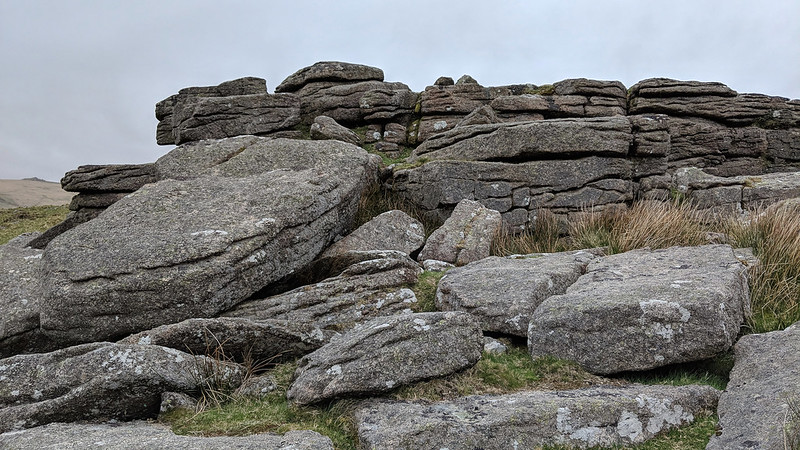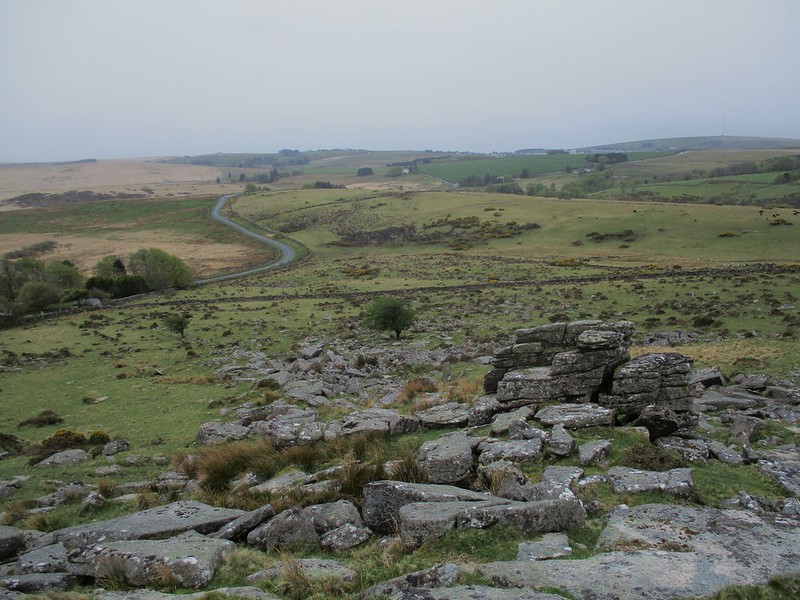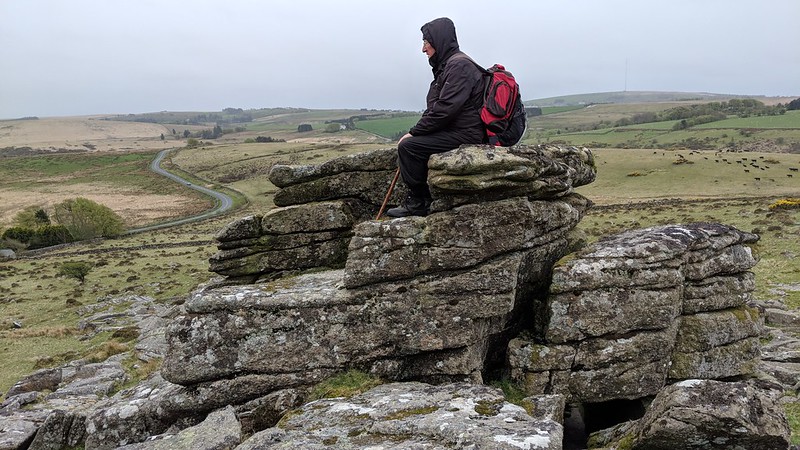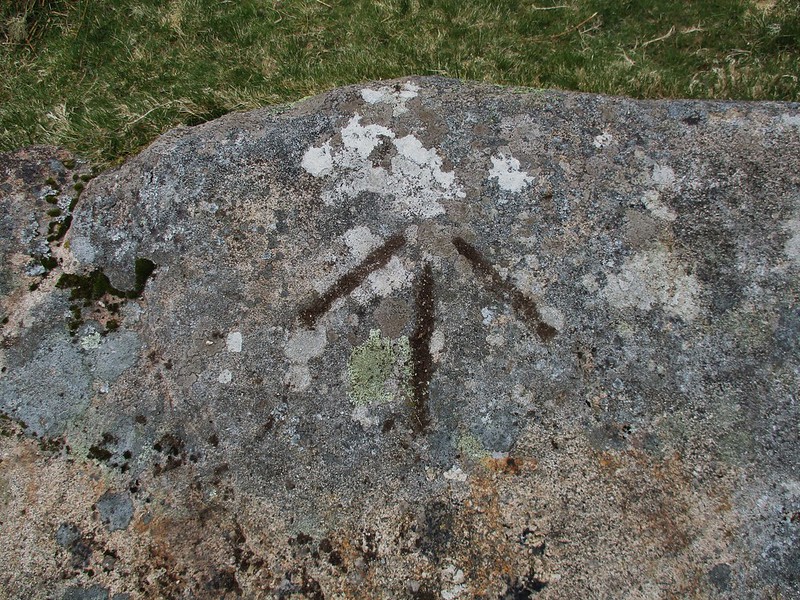TORS OF DARTMOOR
a database of both lesser- & well-known rocks and outcrops
Crockern TorCrockern Torr, Crockerentorre, Parliament Rock
 This somewhat insignificant rock pile when viewed from the south, lies on the gentle slope above Parson's Cottage just to the north of the B3212 between Two Bridges and Powder Mills and is easily accessed through a gate by the road. Despite its lowly appearance the tor is nonetheless steeped in history as once the site of Stannary Court proceedings, that according to William Crossing (1909) date back to September 1494. Here among the sprawl of rocks the various laws and rules of engagement for tin mining on Dartmoor, were debated and decided upon for a period of just over 300 years.  One of the earliest attempts to describe the tor in the literature comes from Henry Edmund Carrington in 1828. Upon his return from an excursion to nearby Wistman's Wood he writes "the tourist ought not to omit visiting Crockern-tor on whose stormy summit the ancient Stannary Parliaments were held". He explains that the tor "is easily discovered from it being marked by a solitary cottage the property of the Rev R Mason which stands at its foot". After the abandonment of the site Carrington explains that the paraphernalia left over from the Parliament such as the stone table and chairs suffered from "time and the ravages of the elements' that 'have at last totally destroyed these interesting remains." That said the curious granite shelter the so-called Judge's Chair, that resides just inside the gateway to Dunnabridge Pound, is often espoused as a relic from that era having been rescued and removed at some point but Crossing siding with the earlier assessment, casts considerable doubt on that interpretation, claiming that the story was unheard of in the first half of the 19th Century. In addition to other tales about the Stannary Court, Carrington gives details of there once being a "cave for keeping wine" amid the rocks that he describes as "a wise precaution at such an open and inclement spot but that modern stannators less hardy than their forefathers have for some time past preferred for their meetings a comfortable inn in Tavistock".  One of the most prominent and best-known parts of the tor lies on the west shoulder where a conspicuous stack known as Parliament Rock is seen. Eric Hemery (1957) explains "A natural stairway on the east side of the rock makes its flat summit easily accessible" and he deduces from the arrangement here that "the result is a kind of balcony which would have seated or provided a long table, for at least eight clerks or officials." Supporting this earlier observation, the author writing later in High Dartmoor, describes how the rock also acts as a natural soundboard, allowing the human voice to be amplified over the court area below and in turn enabling voices from the court area to be heard from above. Near to the summit pile there is a most unusual broad arrow OS benchmark carved on a boulder set flat in the ground at SX 61591 75840.  The final words on this historic site should rest with Carrington who provides an evocative depiction of the views from the tor: "On the one hand is a vast and desolate morass bounded by a chain of broken hills whose heads are frequently lost in the clouds. On the north and east frowns a chaos of shattered tors proudly lifting their savage crests as if to dare the utmost fury of every passing tempest. Closer to the eye is the valley of West Dart and the waters as they struggle with the masses of granite which strew the channel send forth a melancholy cadence."
| ||||||||||||||||||||||||||||